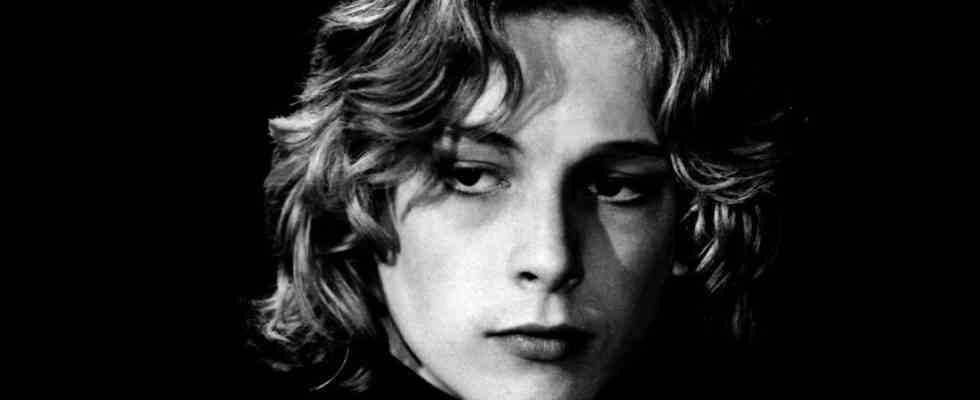The encounter between the Italian star director and the most beautiful boy in the world has been captured on film. It takes place on a bitterly cold winter’s day in February 1970, in a luxurious suite in Stockholm. Luchino Visconti is currently doing test shots for “Death in Venice”, his film adaptation of Thomas Mann’s famous novella. For years, the filmmaker has been looking for an actor to play Tadzio, the boy with blue eyes and honey-blonde hair. In him the composer von Aschenbach, the main character of the film, should discover the absolute beauty and the omen of his own death.
Björn Andrésen, fifteen years old, enters the room while the camera is running. He grew up without parents with his grandmother, who also registered him for the casting. Visconti lets him take off his top and take pictures. He’s smitten. He found his Tadzio.
With these recordings, Kristina Lindström and Kristian Petri begin their documentary about Andrésen, “The most beautiful boy in the world”. Cut to the present – from the blue eyes in the Stockholm test shots to the blue gas flame in Andrésen’s apartment. Andrésen, bearded, chain-smoking and emaciated, is a wreck. His girlfriend presents a filthy carpet that she put on the balcony. His landlady threatened to evict him.
Leap back into the past. The shooting, reconstructed using amateur film footage and television reports, takes place in Venice during Andrésen’s school holidays. Visconti is an absolute master and arranges the young man at will. “Go, stop, turn around, smile!” That, Andrésen later recounts, was the only stage direction he received. The absolute beauty does not have to think.
In Japan, they have manga characters modeled after him
For the fragile, sensitive boy, it’s all exciting, but also overwhelming. What else was there remains diffuse and difficult to suggest without becoming more concrete. After the screening at the Cannes Film Festival, the mostly homosexual crew goes to a gay club. Visconti, who is homosexual himself, was also there, Andrésen recalls. He doesn’t remember how he got home.
The film becomes a worldwide hit. Andrésen, whom Visconti declared the “most beautiful boy in the world”, became an international superstar overnight. In Japan he makes music and advertising, even inspires manga characters, but quickly loses himself in the admiration of others, disappears behind the ideal of beauty that he is now supposed to embody. He becomes dependent on pills and alcohol, a marriage fails, his little son dies of sudden infant death while he lies drunk and sleeps. His diagnosis of the cause of death later: “Lack of love.”
Visconti had him illustrate a story that wasn’t his, says Andrésen’s current, much younger girlfriend once. The statement is typical of the 21st century, which the 20th century can no longer bear: Are you playing something that you are not? An unbearable thought. Still, the statement is understandable considering what the role did to Andrésen. And yet, of course, it takes more than a “death in Venice” to ruin a life. In the second part of their film, Petri and Lindström unfold the background of a sad and lonely childhood. Andrésen’s mother was murdered in the forest. As an old man, he now has access to the files and cannot hide his tears.
Despite all this, the moment when the young man enters the world-famous director’s apartments in Stockholm and thus seals his fate remains the film’s primal scene. And that’s his problem. Lindström and Petri succumb to the charm of the blond angel, like Visconti once did. Starting from this moment, they too make Andrésen an icon – not of beauty, but of suffering. The film is quite touching, but often also sentimental when Andrésen shuffles heavily through dark corridors and across winter-cold beaches as an emaciated silhouette. So the well-meaning filmmakers once again exploit the poor man with the pale eyes. While he once again loses control of his own image.
The Most Beautiful Boy in the World, Sweden 2020. – Director: Kristina Lindström, Kristian Petri. Camera: Erik Vallsten. With Bjorn Andrésen. Missingfilms, 94 min. Theatrical release: December 29th, 2022.

